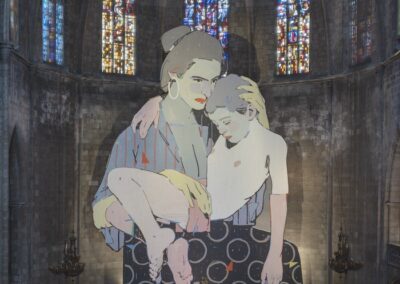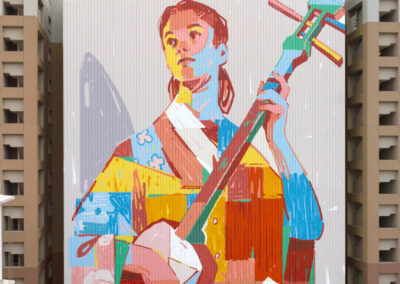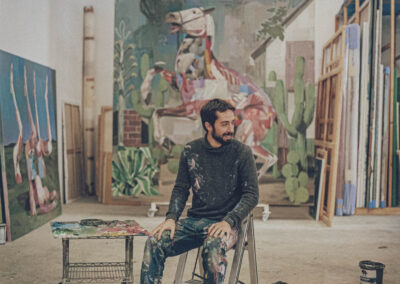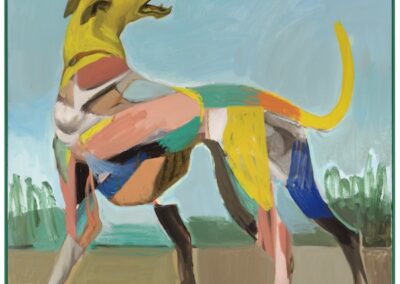ARYZ – VESTIGIO 22. 5. – 30. 6. 2024
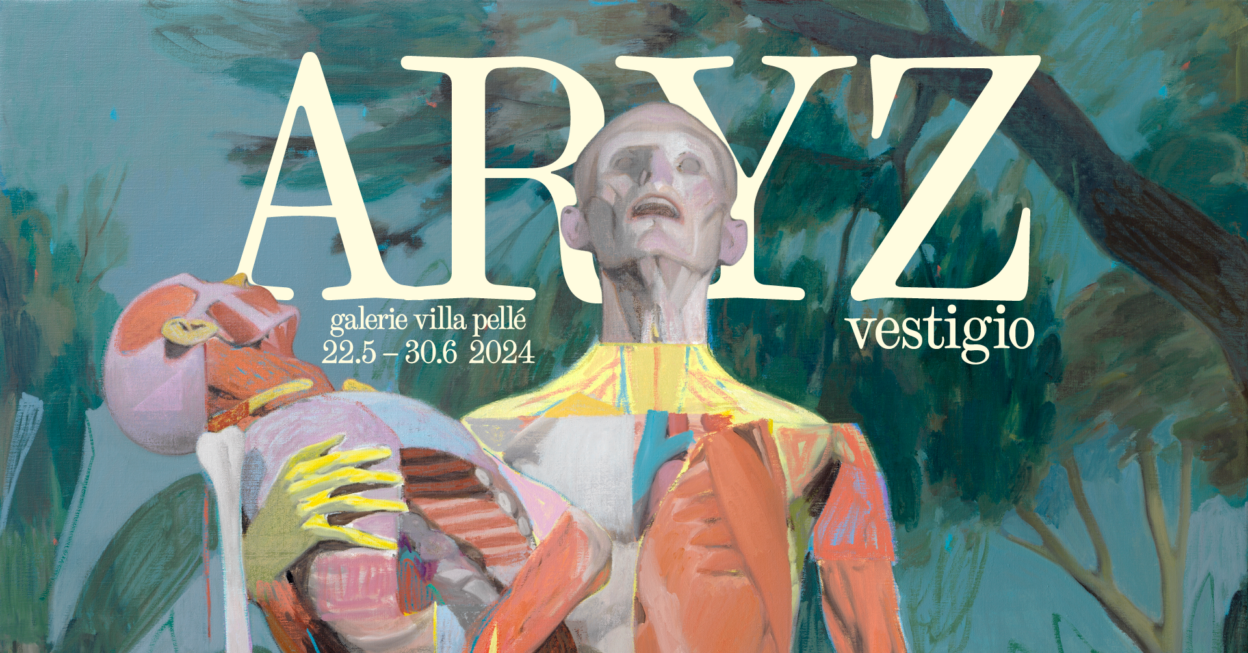
At a quick glance, the art of Octavi Arrizabalaga, known mainly under the pseudonym Aryz, catches the eye by attractive colours, simple compositions, and famous forms that gradually break into disturbing fragments of the depicted reality. Animals or figures, anchored in unspecified natural sceneries, appear in borderline situations existing between tradition and unconventionality, history and the future. Classical painting procedures are combined with digital defragmentation, and static motifs are gradually transformed into dynamic records. Oil paintings communicate a wide scope of feelings and emotions, and with typical showiness present the remains of more or less familiar models.
Similar to the artistic paths of many male and female artists, Aryz’s story began with a teenager fascination with graffiti and street art that naturally combine enthralling principles of fast communication with the wide public, dynamic transformation of the urban environment, and also the appropriation of the collective space for the presentation of political themes or visual activism. He soon exchanged the spray for the brush and produced monumental murals throughout most of the world, but it was painting canvases that dynamised the development of his artistic style and initiated his entrance to gallery institutions, as well as sacral buildings and the public space with monumental painting installations.
Aryz is primarily interested in the act of painting itself that, along with the dialogue with history, serves him to create a new reality. Clear echoes of Spanish Cubism, Baroque, Romanticism, Fauvism, or historical propaganda posters mingle with the legacy of photography and contemporary figural tendencies developed within the New Leipzig School led by Neo Rauch. Whether it is a tension in the art of the Spanish giants such as Francisco Goya (1746–1828) and Diego Velázquez (1599–1660), geometric decomposition by Pablo Picasso (1881–1973), or the manipulation with colours, shapes, and dynamics in the works of František Kupka (1871–1957), his collage-like approach to the medium of painting reveals a clear interest in colour, figure, corporeality, and movement.
The premiere exhibition of the Catalan artist in the Czech Republic, in Villa Pellé Gallery, features a selection from the current Vestigio series that has gradually been coming into existence since 2021. One of the indisputable aspects of the artist’s work is his unflagging desire to experiment and develop his own artistic expression. His previous series entitled Pugna (2019) described intensely, even explicitly, the theme of resistance, struggle, melancholy, and violence associated with the authoritarian Francoist regime in Spanish history between 1936 and 1975. The challenging topic, which to a certain extent was moderated with bright complementary colours, focused his attention to the painted record of dynamics and movement.
He continues to draw inspiration from the movement studies of the English pioneer of photography Eadweard Muybridge (1830–1904) and the French scientist and chronophotographer Étienne-Jules Marey (1830–1904), and he continues to paint figural compositions, albeit this time depicting primarily body and animal motifs. Through an expressive painting style and a kind of fragmentation of body parts, he depicts dynamic movement on the surfaces of various-format canvases, accelerated by phased limbs reminiscent of digital glitches, as well as by layering oil paints and assembling and overpainting particular parts of paintings.
Curators: Michal Stolárik, Lubomír Typlt
